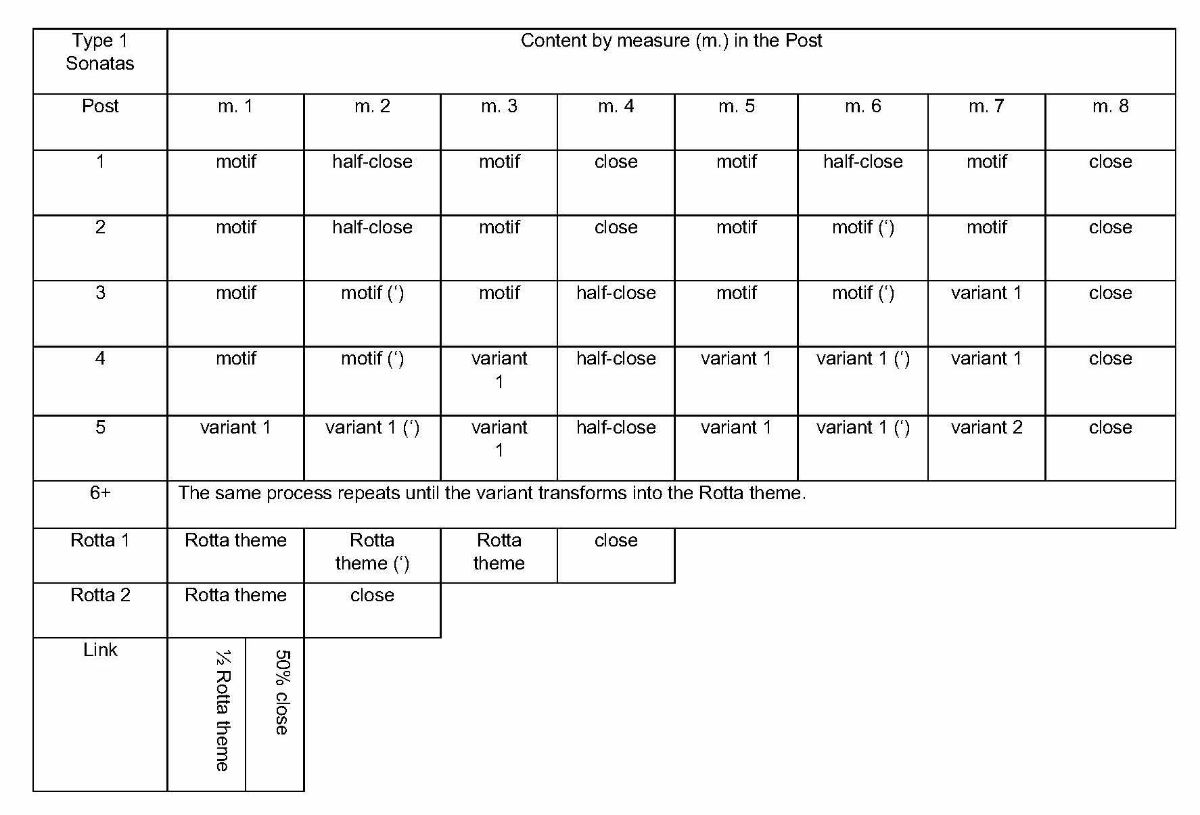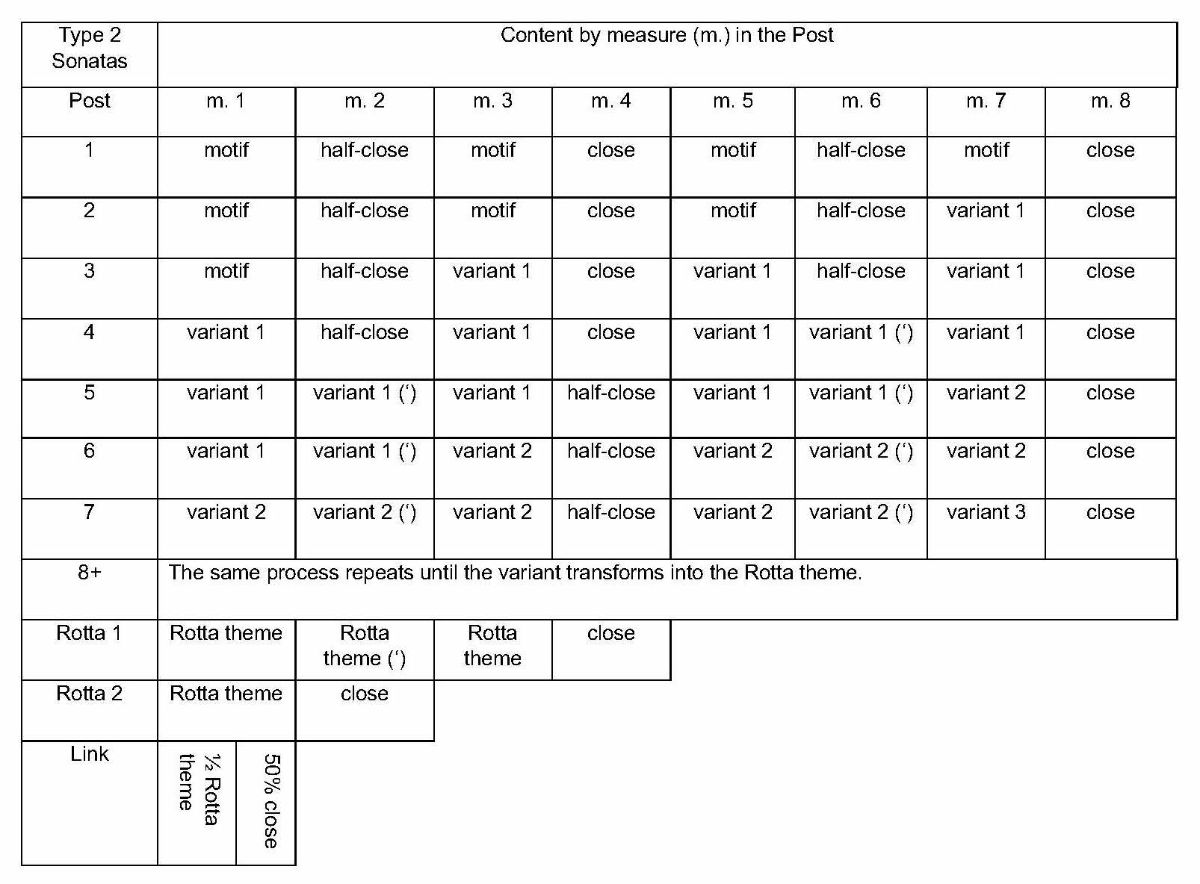It has been shown that the Parte per le Trombette supplied by Schütz for SWV 45 has been extracted from the Italian style sonata repertory. As a result, rather than attempting to match the music found in the other vocal-instrumental choirs also found in the composition (which is self-defeating since the same Principal trumpet content may variously accompany swift or sluggish movement in the rest) the Italian style trumpet ensemble performance practice should be applied. This means that all of the unwritten trumpet parts are subservient to the notated Principal part (normal range c', e', g' and c'' with the rare addition of g below and d'' and e'' above) and must be regulated by its melodic outline and rhythm.
The Alter-Bass (normal range g, c', e' and g' with the rare addition of c below and c'' above) is very easy to reconstruct since it must follow the Principal part at the interval of one harmonic below with a single exception: on the rare occasions when the Principal rises to d'' the Alter-Bass should remain two harmonics lower, on g'. [18] The player of the Alter-Bass was considered to be an expert player as a result of the employment of this adaptation of vocal fauxbourdon technique.
The Clarin part (normal range c'', d'', e'', f'' and g'' with occasional use of g' and the feigned passing-note b' below and a'' above) is also governed by the music found in the Principal part. There are two additional restrictions: at the half-close its melody must include a rise from e'' to g''; and at the close there should be a fall from e'' to c''. The standard Clarin part half-close and close figures are notated in Table 2 (sometimes similar replacements may be found). Since any Clarin melody must merge seamlessly with its half-close and close music this requirement then substantially restricts the shape of any Clarin part in SWV 45. In Entry 2 the Principal part contains a low Clarin register melody and this forces the Clarin player to sound a third above the Principal music and this supplies its music for the entire entry. As a bonus, the Clarin part in Entry 2, like the Principal part, must contain the variant and the modified variant’ of its initial melodic motif which indicates that it should begin with a rise followed by a fall. The Saxon court trumpet ensemble was a leading establishment and its Clarin player(s) were “erfahrnen Musici”, or trumpeter-instrumentalists, so it is likely that the Clarin players would have followed Bendinelli’s encouragement to avoid parallel octaves with the rest – “Clarino il quale schiui le ottaue, ᵽ che dissonano, et non si usano tra intendenti di musica”. Praetorius gives the same advice – “Und dieweil gar gebreuchlich, daβ die Quinta vnd Clarien, sonderlich wenn sie Choral oder andere Arten, in jhren Sonaden führen, meistentheils in Octaven miteinander gehen, welches dann einem erfahrnen Musico frembd vorkompt” – and adds that the Clarin player should embellish the melody with artistry – “vnd exorniret denselben… auffs beste er kan vnd vermag”. [19]
The Volgan (single pitch g until around 1630 when c' and e' were added) and Grob (single pitch c until around 1627 when g was occasionally added) parts may be considered together. We are told that the Volgan and Grob also follow the Principal part but does this include following its rhythmical content? It seems that the Volgan and Grob parts originally supplied a drone bass that was articulated on the underlying tactus alone, with the exception of those sonatas in which the motif in the Principal part began with an up-beat which would also be articulated in the lowest parts. Bendinelli seems to indicate a change in some exercises on the pitches c, g and c'. [20] These pieces are described as “un modo di sonare da Alto a Basso come si usaua ᵽ il passato, buono ᵽ imparar a menar il Barbozzo et esercitare la lingua in tutte le sonade et bono in cose di Guerra”, the first exercise follows the form of a sonata, and this suggests rhythmical articulation of the drone bass in the sonatas, at least at the Bavarian court. By contrast, the Vulgano and Basso simply reiterate the tactus in the slightly earlier Toccata to Monteverdi’s l’Orfeo.
By the 1580s a change to greater rhythmical articulation of the drone bass may have begun at the southern courts as composers began to experiment with the musical inclusion of the trumpet ensemble in their music. At the Bavarian court Bendinelli added a trumpet ensemble postlude to Jacob Regnart’s five-part, counter-reformation hymn Fit porta pervia in 1587 in which the overall strong trochaic rhythm and closing iambic cadences of the vocal piece are considered. At the Archducal court at Graz Raimundo Ballestra’s Laudate Dominum à 12 Cum Tubis ac Tympano from the collection Sacrae Symphoniae (Venice: Angelo Gardano, 1611) and its two parodies that were composed by 1613 – the Missa à 16 Con le tronbe and the Magnificat à 20 Con le tronbe – all share a single refrain on a sustained D Major harmony that invites the addition of a trumpet ensemble sonata half-Post. (D major implies the use of muted trumpets, as was certainly later practice at Graz.) The trend was completed when Giovanni Valentini proclaimed a new way of incorporating the trumpet ensemble in concerted music – “nelle quali mi affaticai d’inventare questo nuovo modo di concertare le Trombe, con Voci, & Istromenti” – in the Messa, Magnificat, et Jubilate Deo a sette Chori, concertati con le Trombe (Vienna: Mattheus Formica, 1621) (the Magnificat was composed in 1618). One of the two surviving part books is the Grob trumpet part, which is rhythmically active throughout and contains music that is neither based on word rhythms (which is usually the case in polychoral music of the time) nor on trumpet signals (as others mistakenly claim today). Christof Straus(s)’ Missa “Veni sponsa Christi”, 13 Voc. cum Tubis ac Tympanis from the posthumous collection Missae (Vienna: Mattheus Formica, 1631) completely exemplifies the new method: the five trumpet parts are equally active rhythmically throughout.
The northern courts seem to have been less receptive to change. Michael Praetorius’ setting of Epithalamium – ‘Nun lob mein Seel’ den Herren’ (Wolfenbüttel: Fürstliche Druckerey [Elias Holwein], 1614) announces the participation of a trumpet ensemble participation but does not include their music although it clearly contributes quarter- and half-Post units based on the chorale melody, and in his setting of In dulci jubilo in Polyhymnia Caduceatrix & Panegyrica (Wolfenbüttel: Elias Holwein for the author, 1619) it is simply stated that the Volgan, Grob and Fladdergrob parts follow the upper parts – which are printed – in the usual manner. (Praetorius acknowledges the varied use of five- and six-part trumpet ensembles in the north. He also adds an additional part for second Clarin in In dulci jubilo although this expansion to the ensemble was not adopted by others at the time.) In the anonymous Intrada der Trommeter (1627) there is no Volgan part (it is replaced by a second Clarin part) and the Grob part deviates from the tactus only at changes of harmony and at phrases that begin with an up-beat. In Johann Arnold’s Sonata (1652) the Volgan is triadic in nature and is as active rhythmically as the higher parts, while the Gröbe mostly supplies the tactus, apart from a Solo passage in Post 3 where it moves at the half-tactus level. Despite this, Andreas Hammerschmidt’s Lob- und DanckLied (Freiberg in Sachsen: Georg Beuther, 1652) from the same year includes a five-part trumpet ensemble (two Clarin, Principal, Alter-Bass and Grob parts) in an old-fashioned refrain on a sustained C Major harmony in which its Grob part is as rhythmically active as the rest.
The question must be asked: do the Volgan and Grob parts in SWV 45 simply present the tactus? The evidence from the Saxon court at Dresden suggests that in 1617, while they were keen to participate in polychoral music, they did so in a manner that allowed them to retain their traditional performance practice. Therefore, it is most likely that they merely articulated the tactus.
The timpani part by nature of the instrument is necessarily a rhythmically active part. There must have been a tendency for timpanists to be over-enthusiastic in their performance so that Bendinelli warns the timpanist to follow the beat – “Vsi dilligenza il Taballero in saper quell che si sona acio batti [a tempo]” – and the same is echoed by later composers. It is lucky that the earliest known timpani parts survive in Michael Altenburg’s collection Gaudium Christianum (Jena: Johann Weidner, 1617). [21] The two drums are pitched at c and G, respectively, and are not then “church kettledrums” that came to be used later in the seventeenth century in, particularly, Lutheran churches and that were pitched at g and c. Altenburg’s timpani parts must be approached with care since they exemplify a quite mature village players’ style, not a court practice. Yet it is interesting to find that G is occasionally sounded by the timpanist where the harmony suggests c, that c otherwise predominates, and that both drums are often struck together at section ends which then prevents any inclusion of drum-rolls at the Clausula finalis (which is unfortunately popular in modern “historically-aware” performances). In Christof Straus’s Missa “Veni sponsa Christi” the timpanist mostly follows the part for Tuba Basson o Gröb – “Cum hac Tuba Tympanista simul consonare debet” – and substitutes the pitch G when g is met in the Grob part (the part includes both c and g since it reproduces the root pitches at V-I cadences in C major), although at the start of the Credo it accompanies a solo for the Tuba chi sona il Mezapunto, or Principal part, and follows much of its presentation of a complete Cavalry March signal to do so. The timpani part, then, should be rhythmically active, although not excessively, the pitch c should predominate, and both drums may be struck at section ends.
If these aspects of the Italian style performance practice are applied to SWV 45 then a period-sensitive trumpet ensemble contribution may be made to this Jubelfest setting of Psalm 136 Danket dem Herrn denn er ist Freundlich. This avoids many of the problems associated with the simple copying of the composed highest line to produce a Clarin part since, while this can include some useful contrary motion with the Principal part it does so by adding unfortunate parallel octaves with the Alter-Bass. In the case of Entry 7 for which Schütz supplies no music it is possible to adapt the intrada music (actually the start of an Aufzug) found at the end of Praetorius’ In dulci jubilo a 12. 16. & 20. Cum Tubis [& Tympanis] for an ensemble of five trumpets, with timpani. Example 4 includes suggestions for the seven entries in SWV 45 that are presented with the reminder that they supply a solution to the problem, not the only solution.

.jpg/jcr:content/Illu%201%20(Ex%201).jpg)
.jpg/jcr:content/Illu%202%20(Ex%202).jpg)
.jpg/jcr:content/Illu%203%20(Table%201).jpg)
.jpg/jcr:content/Illu%204%20(Table%202).jpg)


.jpg/jcr:content/Illu%207%20(Table%203).jpg)
.jpg/jcr:content/Illu%208%20(Ex%203).jpg)
_S_1.jpg/jcr:content/Illu%209%20(Ex%204)_S_1.jpg)
_S_2.jpg/jcr:content/Illu%209%20(Ex%204)_S_2.jpg)
_S_3.jpg/jcr:content/Illu%209%20(Ex%204)_S_3.jpg)
_Se_4.jpg/jcr:content/Illu%209%20(Ex%204)_Se_4.jpg)
_S_5.jpg/jcr:content/Illu%209%20(Ex%204)_S_5.jpg)
_S_6.jpg/jcr:content/Illu%209%20(Ex%204)_S_6.jpg)